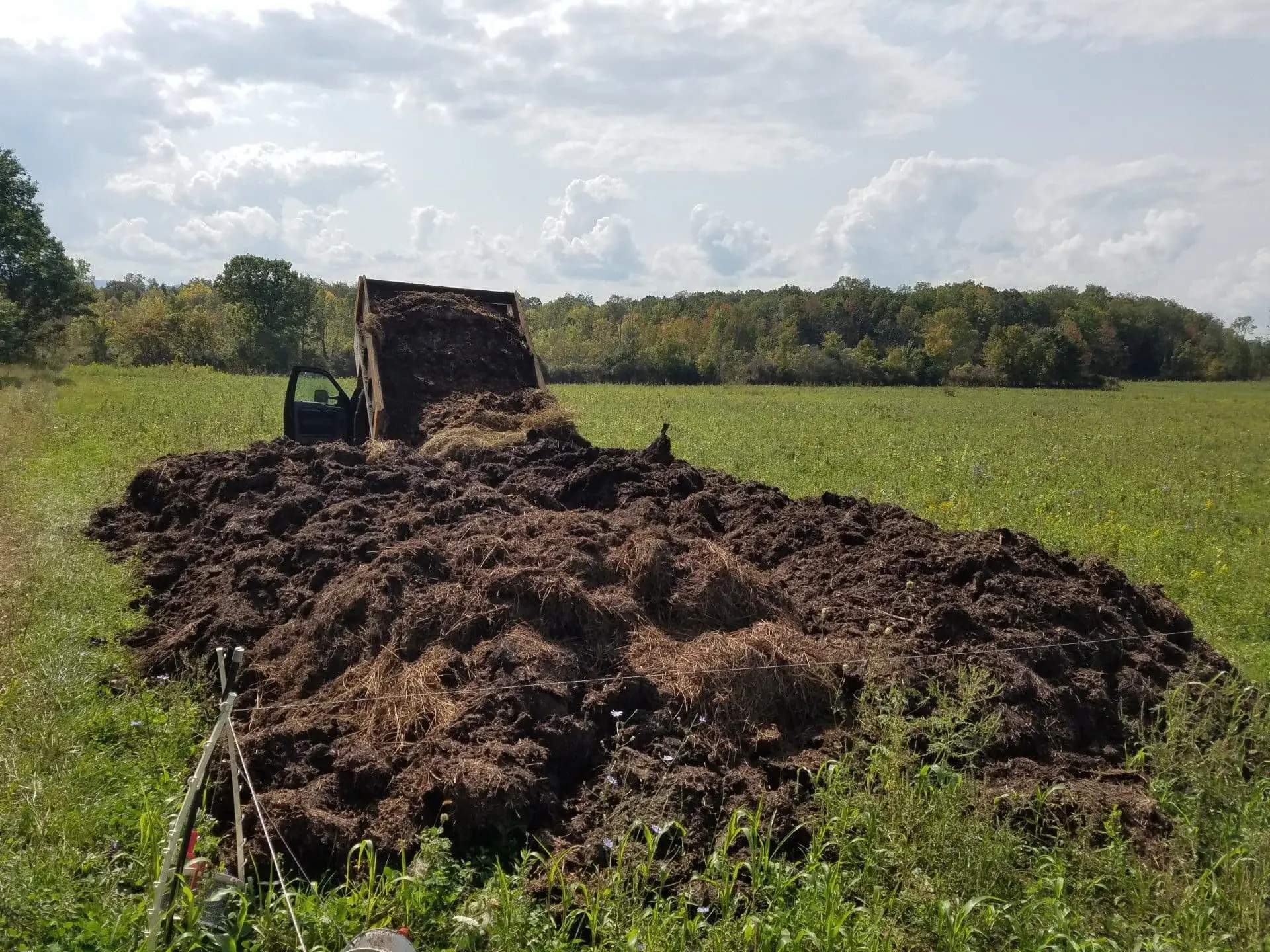‘Tis the season to clean out the deep bedding packs from the hoophouses where the chickens and pigs spent the winter. I’ve never been able to find time in the schedule to do this earlier in the summer, so most years it is a September or October task.
I built some extensions on the flatbed’s stake sides. This increased my dump capacity, saving trips trucking loads of material out back to the composting spot. This year I’m trying to get smarter with material placement, so my compost heap is right next to the field where I want to spread it. I should have thought of this years ago. Baby steps…

Our composting system works in two stages. During the winter, the bedding packs are quite thick so they begin spontaneously composting. Because we also have populations of red worms in our hoophouses, we have active vermicomposting throughout the winter. In the spring when we turn the animals out to pasture, the bedding packs dry out and composting activity slows. When I place it in windrows in the fall, the aeration of digging and dumping help restart activity. The piles continue to compost until they freeze in the winter (the cores of the piles usually remain frost-free, but there isn’t enough heat or aeration to sustain much activity).
I’ve placed two windrows side by side. In a few weeks, there will be a noticeable diminishment in the pile sizes, so I’ll combine the two into a single long windrow using the loader bucket. There are expensive compost turning implements available to make spectacular compost in a period of weeks, but the tractor bucket does pretty well and it fits into our preference to avoid purchasing specialized machines. The compost won’t be finished and ready for spreading until next year, but it will be an excellent soil amendment nevertheless.
I haven’t figured out the perfect time of year for spreading compost, but I think fall probably works best in our situation. Early spring is almost always too wet for driving across the pastures. During the summer it could work by immediately following the grazing with a spreading, but the timing is challenging, especially when trying to schedule to use someone else’s spreader. Winter spreading is possible when the ground is frozen and when the snow pack isn’t too deep, but that creates a lot of runoff risk. Fall spreading seems to be the best option for us. We can spread compost on a field after its final grazing for the season. As long as we don’t allow the cattle to graze down to the nubs, there will be plenty of plant matter to hold and stabilize the compost. With our fall weather we can count on freeze-thaw cycles at least until mid-December, so there is plenty of opportunity for incorporation before the soil becomes ice-bound.
For as much as I truly value well-made compost, I’m glad when this job is finished. So does the rest of the family. By the time I come in for lunch after a few hours of scooping and dumping the smell has permeated my clothes and hair, so everyone shifts their chairs to the far end of the table, giving me as wide a berth as possible. Of course, I exacerbate the situation by making sure to give bear hugs so everyone can share the love. Next, aromatherapy for farmers, bottled parfum de merde.
